Num. 5 - September 2015
Tutti gli articoli
Tutti gli articoli
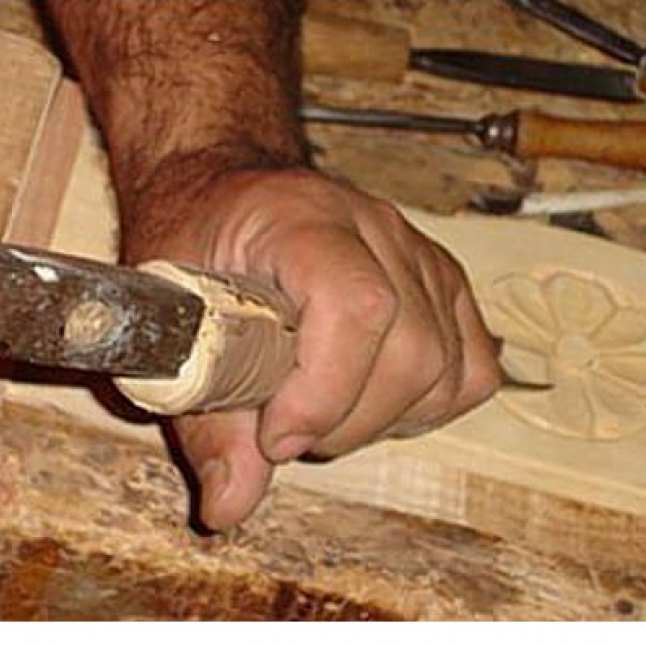
01 September 2015 The history of an artisan of wood
The wisdom and the competence of a family, that lives since 1854 in the field of furniture, are determiner factors for the production of furniture that can last for a long time. The best wood makes the best furniture. The skill of the Pili Family is that concerning the choice of the most suitable wood for the realization of a specific furniture and for guaranteeing to it a great preservation and endurance.
From the great-grandfather, to the grandfather, to the grandchildren until arriving to the twenty three-year-old great niece Anna, the Pili Family includes various members who undertook the way of furniture. The art of wood involves a family tree that is 160 years old.
When he finished studying in the Industry Technical Institute, the Giuseppe Pili’s life has changed completely. Indeed, he was born and grown up in the joiner’s workshop of his kin and it was a choice and not a passion for him. When he was a child, he began living in the workshop and knowing this kind of art. The smell of the wood, its peculiarities and its manufacturing allowed the young Giuseppe to live an unique experience, composed by curiosity, passion and full creativity.
The decision of working as woodworker was automatic, given that he lived a whole life among "the artists of wood". He used to have this type of life such that it was a logic consequence to belong to this field. Dedication and enthusiasm emerged in a short time and the Giuseppe’s skill came quickly, creating amazement for him, too, considering that, before his path of studies was different.
In 2011 there was the turn of his daughter Anna. Obtained the diploma in the Teachers’ Institute, she understood that her future was another and she found the answer in the workshop where her father works. Through the paternal experience and lesson, she was able to intensify the passion and the pride of doing this job.
From the initial fear there was a next passage towards admiration and excitement. Anna felt a strong zeal towards this activity such that she learnt quickly the words, the use of the tools and the use of the techniques. Despite her young age, she was able to prove her skill generating a touch of originality, through updates about modern furniture and advices concerning the disposition of furniture following a particular style and a precise affinity.


01 September 2015 The truth in the veil: Interview with the designers of Inveloveritas
In a land that in its history finds every day new narrative shades, artistic, scientific, the traditional Sardinian clothing has still much to tell, because about its multiple and complex forms, which have crossed for centuries the Island like a continent, no one has yet managed to deeply pigeonhole the sources of inspiration.
A little as if the corittu (bodice) and the ragas (short skirt of male suit) had remained entangled in a web of religious, mythological and intimate ideas, that in the interweaving that leave the spectator - because a spectacle, really, it is - amazed and surprised, especially when to wear the clothing is the proud precious profile, a little Phoenician, of the Sardinian woman.
Are well aware about this Giuseppe Scalas and Maria Francesca Maniga, aka Morisca and MFM, who observed this vast and varied textile production and tried to transform it with a skilful creative mixtures of meanings, in compliance with the best practices of postmodern mix and revaluation of arts, signs and beauties.

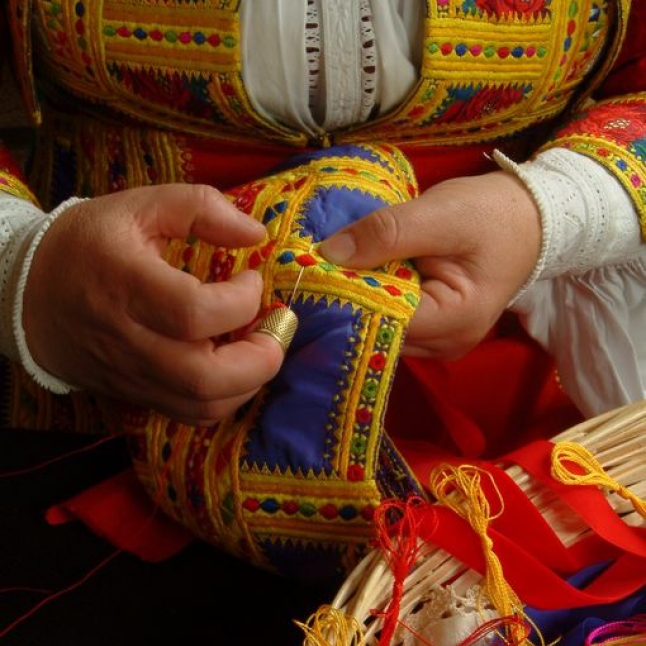
01 September 2015 Made in Sardinia
One of the most widespread activities in Sardinia is craft that, in addition to transmit the ancient traditions and so to preserve the historical and human heritage, represents the most original and interesting expression of Sardinian art.
Weaving, pottery, the manufacturing of metals, carving and the art of weaving are still made through no modern techniques and methods; therefore, it allows to obtain things from those more useful to those decorative, with a considerable artistic taste. The patterns of decorations, the stylised shapes and colors often recall an ancient past: it is enough to visit an archaeological museum for find again the inspiration of the figures painted on the carpets or the geometric patterns of potteries or the etchings on the bone handle of knives.

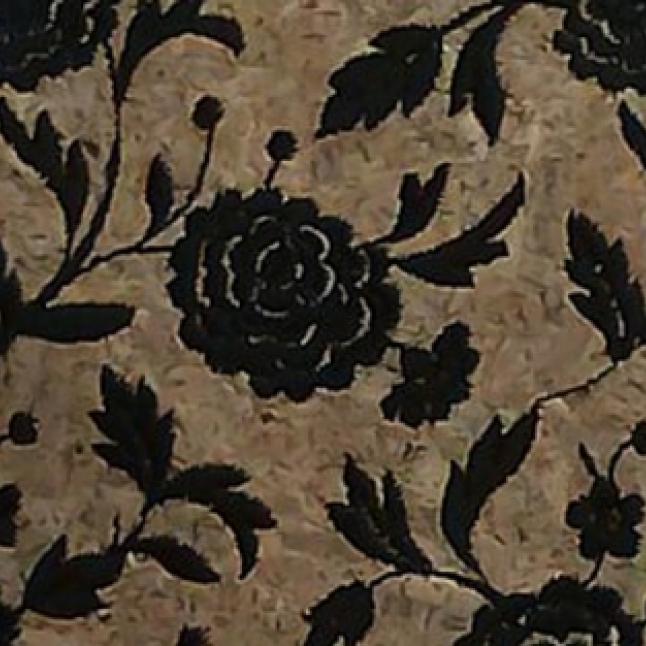
01 September 2015 Massimo Mattana and the workshop of cork
The most important award that an artisan can receive is the purchase of his products by customers; it is the appreciation of his creations by buyers; it is the image of ladies’ eyes that shine when they see a thing that makes them be crazy. They are not the official recognitions or plaques that create satisfaction for the artist, but, on the contrary, the continuous inflow of people who want the thing produced by that artisan.
Massimo Mattana creates cork works of art that are loved by lots of people. The biggest pleasure comes from the great interest that can be identified by who buy goods presented by the artisan. Knowing that initially cork was not a particularly appreciated, above all in a small village like Assemini, where other artisan activities prevail, and verify that, then, the entourage of customers has been growing up, becomes a beautiful personal and professional gratification, that incites to work more and more for guaranteeing an avant-garde product and for obtaining an enormous success. People’s idea is linked to fashion and not to the tradition of own land. Massimo Mattana could melt these two features in different sets of samples that recall both the culture and the origin of the Island and the current trends.
Born in 1995, the Massimo Mattana’s Workshop of cork became an important firm known by a lot of people. When he was nineteen years old, this artisan lost his job because the company, where he worked, was closed. The luck into the misfortune pushed him towards his father’s hobby. During the first years, it was a "rescue job", because, in the absence of other, that was the only lifeline. Then it was a true passion and determination increased. Certainly, firstly, there were the first difficulties, because the very young age of this boy did not give faith to customers. Moreover, a not insignificant enemy was competition, not in the cork field, because there is not a big number of artists who are involved to that, but, on the contrary, generally in the craft field.

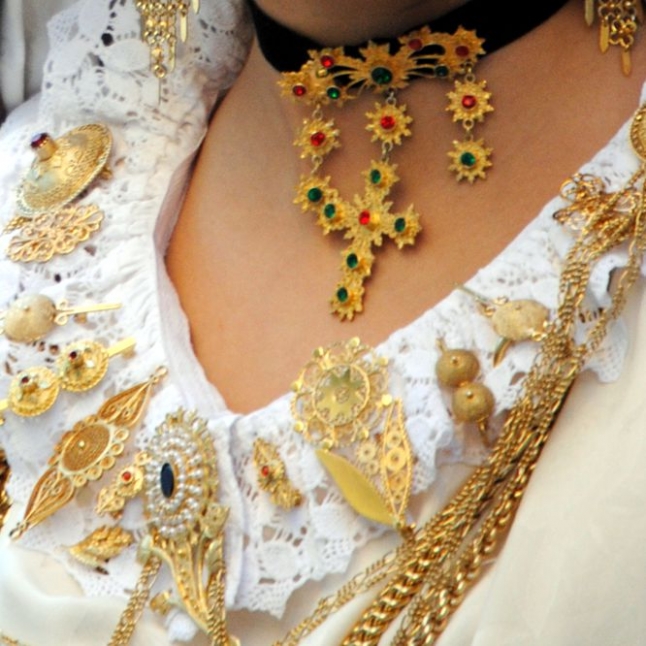
01 September 2015 "Prendas" the filigree jewel
Among the goldsmiths, along centuries, was developed the traditional Sardinian jewelry, that distinguishes it from any other, even if influenced by different cultures landed on the island over the centuries.

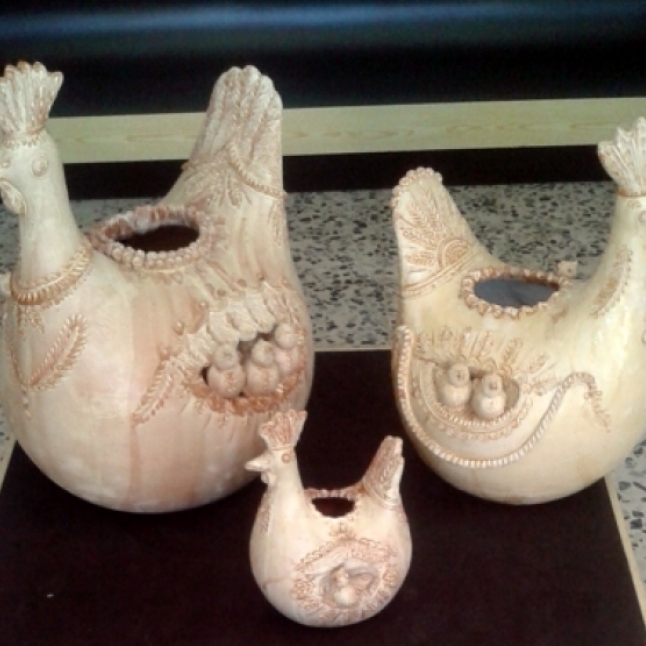
01 September 2015 Andrea Farci, a family of potters
The most suitable school for a young boy that follows a specific path of studies and wanted to start a certain career is certainly his family. If the teenager has the opportunity of having a father or a grandfather that works in the same field where he himself was specialized, it is important that he seizes the moment. Who more than a kin can have an interest for the future of a son or a grandchild? Who more than a kin knows the wishes, the sacrifices and the goals of that young?
Andrea Farci, a potter of Assemini, followed the feetsteps of his father, who in turn, previously, had begun working with his brothers, Gianfranco e Gaetano, into the pottery workshop of their father Vincenzo. The grandchild belongs to the third descent of the known family of potters in Assemini. Finished the studies in the Artistic High School in Cagliari, his grandfather’s workshop became his home. He attended the lessons issued by his predecessors and have always kept long-lasting the activity of his family.
His grandfather Vincenzo became to work in the field of pottery when he was very young. He learnt the tricks of the trade in the school of a known potter, come from Bosa, lived between the end of the 1800s and the first years of the 1900s. Later, he carried on in the workshop of another important teacher, come from Cagliari and lived until the end of the ‘90 of last century.
Among the techniques learnt by the child Vincenzo, there was that about the manufacturing and the realization of pottery products through the "mitten oven", thanks to which he could decorate the product "rashly", then subjected to another baking. In addition to the classic samples, such as pots and dishes, Vincenzo Farci learnt to create also the small horses present on the roofs of the houses, alike those present on numerous houses in Assemini and Serramanna.
These things have a value of superstition, because they can remove the jinx, common idea in the people’s traditions.

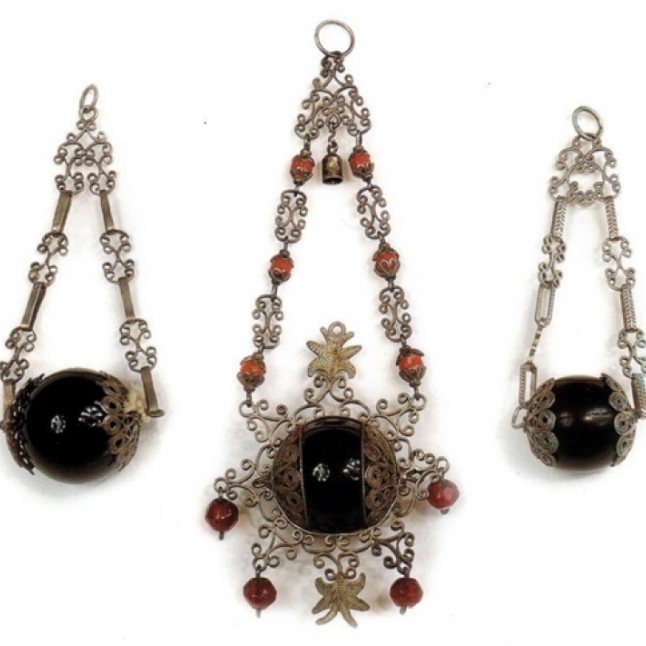
01 September 2015 Roberto Mele: time, patience and precision
A child of today lives among toys and sophisticated things. A child of the past used to spend his days among fantasy and creativity, among simple products and few toys. The most beautiful hobby was creating from nothing something that he saw previously as built by experts. A ten-year-old child enjoyed watching his father that worked as a goldsmith and as a watchmaker and he imitated his gestures.
This child was Roberto Mele, goldsmith and watchmaker, who since he was a child dedicated himself to this passion, beginning with small things, such as disassembling clocks and watches. The love for this artisan job did not abandoned him. Earlier, he worked elsewhere; but, during the time, his heart encouraged him towards the world of watchmaking and goldsmithing. His father, who was his teacher, was one of the veterans in this field in Cagliari. He attended a course of micromechanics in Algeria and, during the War, in the period when he was a prisoner, he learnt this kind of art and other talents, such as the realization of the mandolin. Between a prisoner and another there was an exhange of skills, techniques and experiences.

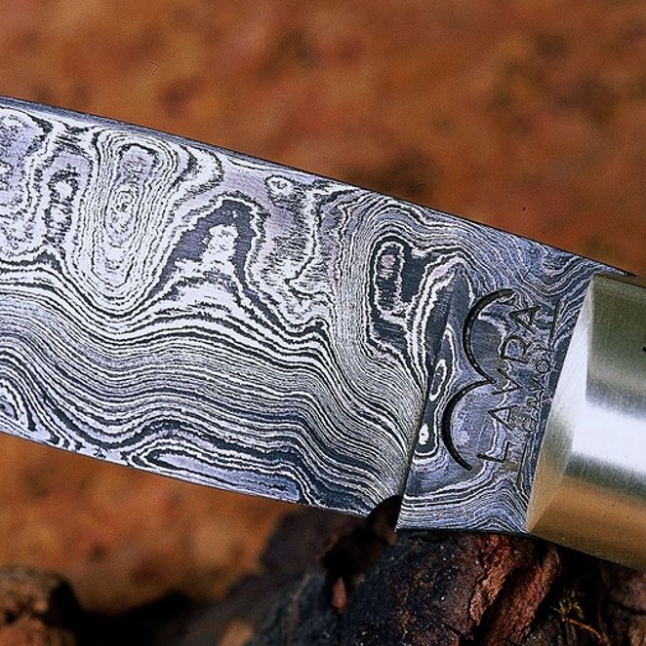
01 September 2015 Arresojas and leppas
The steel industry in Sardinia has prehistoric origins. The antiquity of the land of Sardinia, in fact, has assured its residents a wealth of minerals mined since ancient times.
Therefore, objects of metal and therefore the activity of blacksmiths craftsmen have always been the prerogative of each village, in addition to the symbolic meaning attributed to certain objects and in particular, to the knife.
The "balentìa" (the value, that is a mix of skill, bravery and wisdom) is immediately recognized by the knives, unlined proudly to cut bread, cheese, or the slaughter of the pig (a real ceremony, involving the family and friends), of the sheep and lambs or hunted. The most skilled craftsmen and creative are those of Pattada (NU) and Guspini (CA) who create works truly worthy of the finest collections.

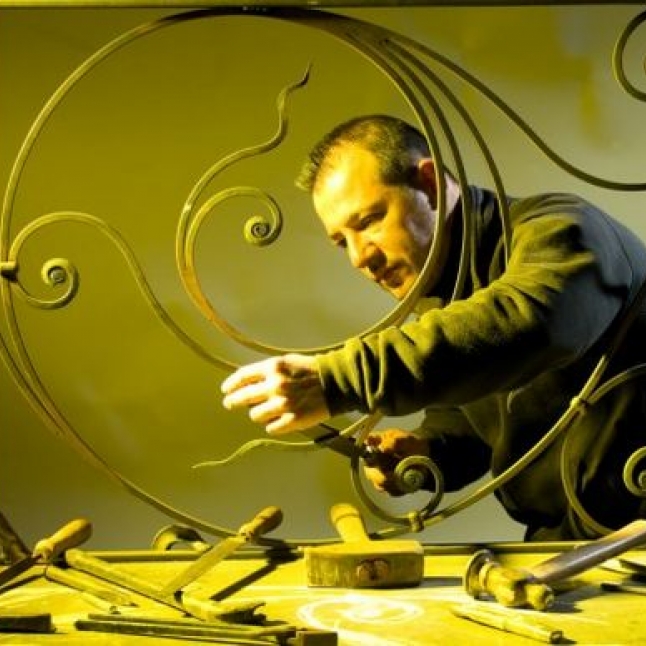
01 September 2015 Roberto Ziranu and the wrought iron art
In a land whose the subsoil metalliferous wealth have been exploited since the Nuragic Age, a profitable and excellent processing activities of non-precious metals must necessarily be developed.
Among the various non-precious metals used by the Sardinian people, there was the iron and its use has given rise, over time, to a trade as ancient as hard and difficult: that of the blacksmith.
This noble profession comes down to our time thanks to the perseverance of men who often handed down from generation to generation, the old family tradition, adapting it, incredibly, to modernity. Without this passion, today there would be no blacksmiths, energetic and hard-working craftsmen that through the blows of the hammer on hot iron over the anvil, forge and create objects still able to surprise.

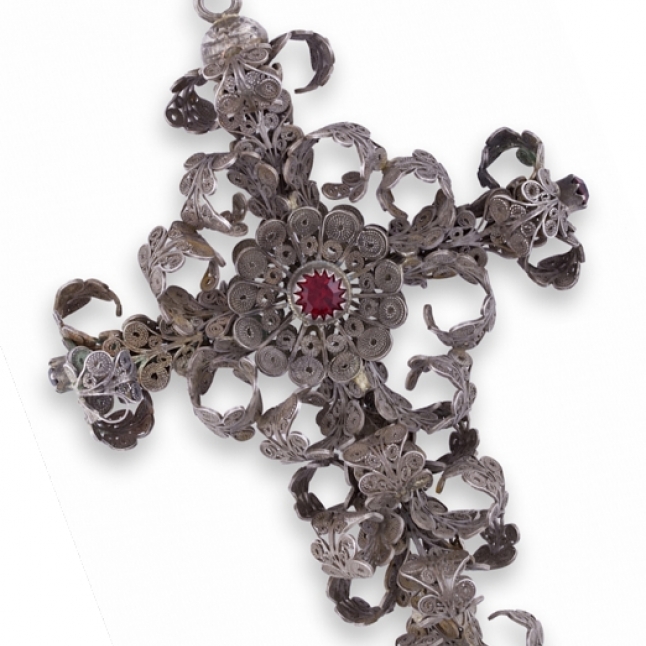
01 September 2015 Bruno Busonera: the goldsmith with the golden hands
From shop boy to goldsmith with the particular ability of creating true jewels, unique in their kind and appreciated by lots of individuals. Many people know Bruno Busonera and had the honor of commissioning some works made by his hands as an artist. From the realization of religious and ecclesiastical things to the accessories and the ornaments of the folk groups come from various areas of Sardinia.
Bruno Busonera was eight years old when he began knowing the gold art.
Day after day, the shop boy, while he watched how things were made, he began getting into and taking familiarity with that job and, step by step, he learnt to create precious stones with his own hands.
The apprentice became a teacher and, in ’74, opened his workshop, that shop so much aspired, that shelter where he felt to be protected and free to express his artistic verve, creating things made by him, where he himself was the artist.
His work is conducted for about ten hours, during the day. It depends by the thing: normally, for realizing a jewel, he needs two days. But, certainly, the result obtained, after a long time of full immersion, is a total precision and mastery, splendor and magnificence, glare and brilliance.

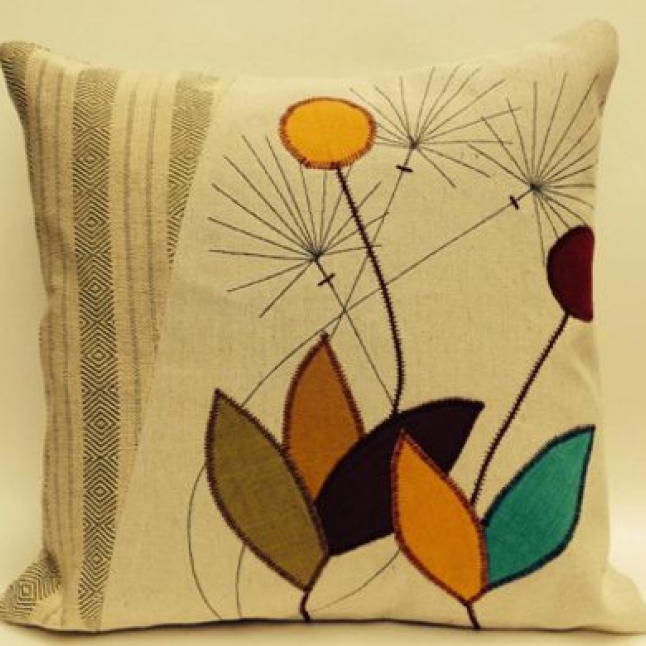
01 September 2015 Carlo Budroni: a big passion for Sardinian fabrics
Carlo Budroni, when he was sixteen years old, would not have never appreciated a fabric; as all the teenagers, he spent his time in the middle of games and robots. Growing up, individuals discover new passions that they would not have thought having and they observe the world with a different eye. Today Carlo Budroni is an artist who creates some faithful friends of women: bags and furniture accessories, using Sardinian materials and fabrics. And a plain geometric shape, such as a circle, can become the distinctive symbol of the artist’s creations. In the past, in Milano, with a team of colleagues, he dedicated his time to a fashion magazine about shoes. Specifically, Carlo Budroni drew the trends of the shoes.
Why the brand "C+C"?
"C+C" was born in Milano, from the idea of drawing clothes, industrial felt bags and shoes. It was ’98 and "C+C" represented the names of Carlo and Camille, my previous partner. Then, the brand came in Sardinia, moving to Cagliari in 2004 and since 2007 the shop is in Via San Domenico. In 2009 it was born the partnership with Ludmilla. I attended the European Institute of Design in Cagliari, carrying on with that present in Milano.
What kind of things do you create and what fabrics do you use?
The wish was that concerning the realization of bags with a Sardinian fabric, because I love the rough fabrics, such as coarse woolen fabric and wool. I create bags and furniture accessories, using the Sardinian fabrics come from Samugheo. The idea of using Sardinian fabrics is linked to the interest and to the choice of producing something through those materials. It is a cultural discovery. Women advices and wishes are important and I generate other goods also based on things that ladies see in the shop windows. When there is an unique sample, the situation is different: for instance, a customer brought a blanket dated back to 1940 and from that I created a bag. An unique sample.

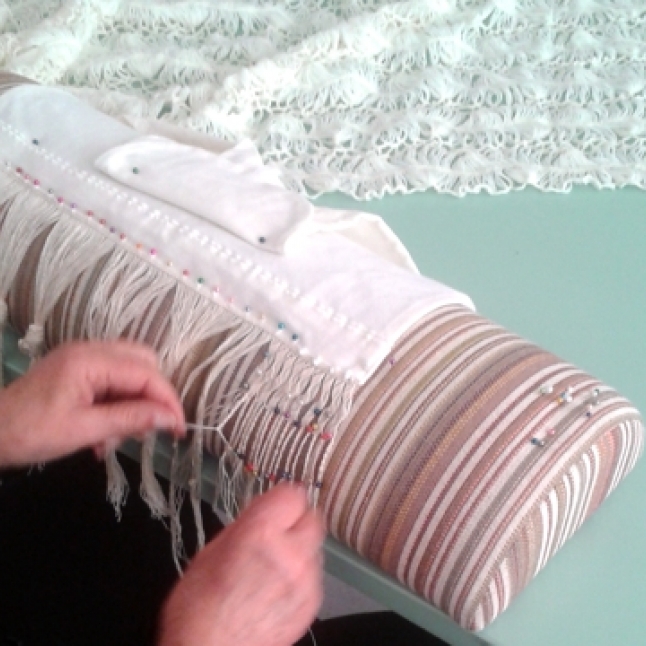
01 September 2015 The Association of women of Assemini
One of the talents of woman is stakhanovism. Woman is always dynamic; she is able to do various activities; tiredness is put into the background. Unfortunately, often the opportunity of emerging and showing her skills is not given to feminine figure. The only way for being someone is demonstrating it and fighting until obtaining this right.
The Association of women of Assemini was born in December 1999, because they felt the need to guarantee a space for women, since nobody had thought to this issue yet. There is not the mentality of including the feminine figures into the groups already effective.
The first activities made by the members of the Association concerned dances, gymnastic and theatrical activities. The work on the stage is still present: indeed, it is important an event that renews each year, Luisiccu S’Arruxiadori, a Sardinian comedy with one act, during which the main subject is different for each show. Then, there are dances, during the evening, for satisfying both who is old and who is young.
Instead, the physical activities decreased progressively, because of the lack of suitable spaces. Often there is the proposal of collaborations with gyms both about sport activities both self-defense. But, they are sometimes simple ideas that have some difficulty for being realized.

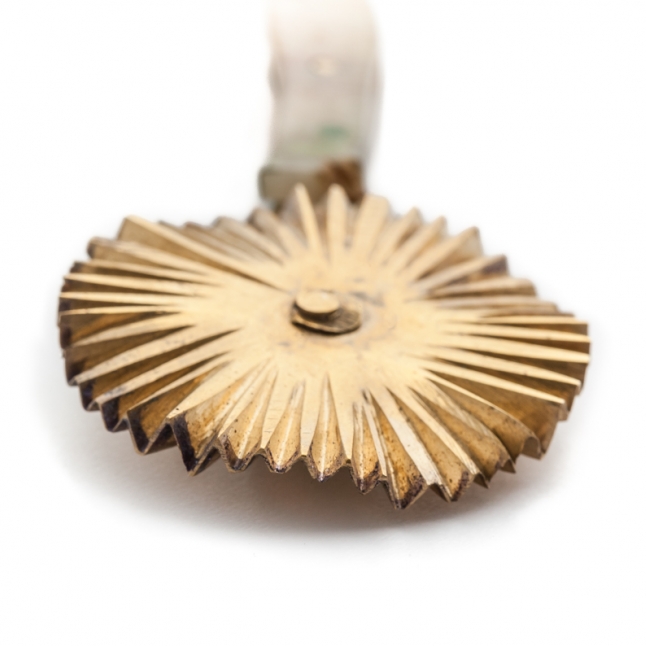
01 September 2015 Gino Moledda: the creativity of the master cutler
There are many historical phases that marked the birth and development of the Sardinian knife. Cutting tools have ancient origins in Sardinia.
However, it is only after the fifties of the last century that the Sardinian knife has had an important development. Its rediscovery and the appreciation for manual techniques and traditional processing have launched the process of transformation of the request.
From object for everyday use, the knife has gained more and more the characteristics of an artistic object. This change has not only raised the knife to an artistic element, now burst into the Sardinian tradition, but has also preserved the job of cutlery by the disappearance.
Steel blade and horn handle, especially sheep and mouflon. Today the knives handicraft has reached a very high level of aesthetic forms of expression.
There are many centers of Sardinia, where the culture of sa resolza or arresoja is the most developed, although there are two places where the typical Sardinian jackknife are more extensively developed. The main and most famous centers of production of the knife in Sardinia are Pattada (SS) and Arbus (VS).
In Pattada originated the famous pattadesa, slender blade jackknife, and Arbus is the birthplace arburesa, which, however, has a wide leaf-shaped blade and a narrow tang.

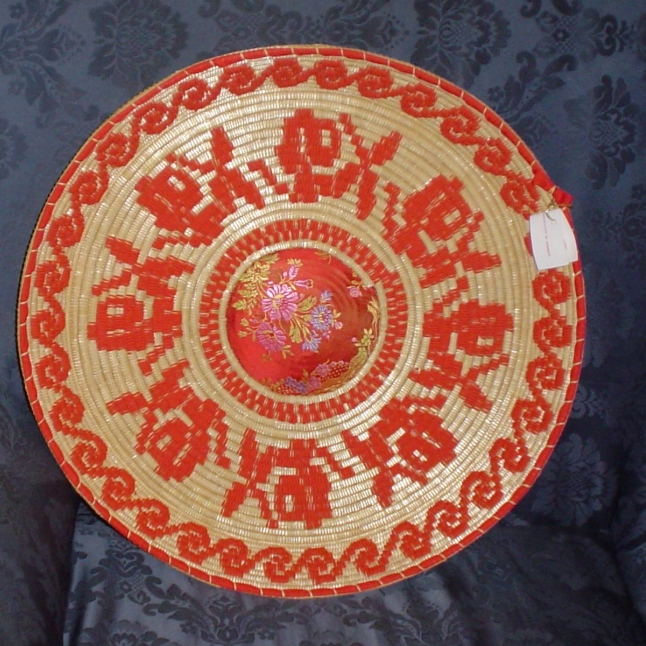
01 September 2015 The baskets of Sardinian tradition
At the foot of the promontory of Serpeddì Mountain, Sinnai rises up. It is the village of the hay and reed baskets. Here the art of weave is linked to the manual skill of a creative artist, whose passion for the handmade manufacturing of reed creates true works of art.
For twenty years Alessandra Floris has been devoting her life to create "Su strexiu de fenu", the set of baskets and sieves indispensable for the preparation of bread. Baskets made by an expert and steadfast hand, able to manage and support the natural "thread for sewing" by herself cultivated and dried, such as the reed itself, that particular plant with the etymological meaning come from the Latin verb jungere, namely "to link"; indeed, it was used ab origine for the creation of baskets and laces.
There are not equipments for working for the traditional inventor of baskets, but only a punch put between the little finger and the ring finger, aimed to assist the making of the herbaceous plant, that links to itself the hay and allows the creation of the basket on the basis of a circular way that supports the natural deploy of the typical thread for sewing.
Indeed, what marks that artisan of Sinnai is the production made of reed by herself, curated from the cultivation to the drying until the manufacturing for creating the final work of art, such as the basket of the Sardinian tradition of her village.

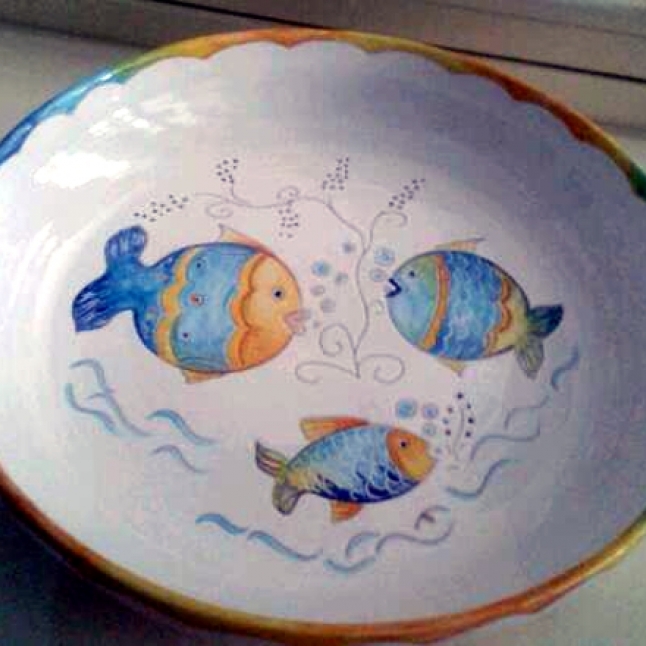
01 September 2015 Ignazia Mattana and the market of pottery
All long numerous firms have been relying on the expert hand of a salesman, a sales agent that represents an essential figure in the management of the sale of products. His role concerns the advertisement of the goods proposed by the company which he belongs to, but, at the same time, he must be able to intercept also what market essentially requires, in order to be continuously up-to-date. It is important not to be always anchored to the past, because customers want things that are current and compliant to the present.
Ignazia Mattana, a potter of Assemini, chose to walk through this road: the sale of her products is coordinated by a salesman, whose role is linked to advertisement and information. He is a figure with which there is a very solid relationship of faith, because he allows to obtain success and a continuous request of the artisan and artistic Ignazia Mattana’s works of art. Through studies and updates, it is possible to reach a perfect adaptation with the typical customer’s demand.
From the kind of things to that of pictures to paint, she is able to satisfy the market of pottery. From the typical specimens that comply with the tourist current, such as the Sardinian women in a costume, pots and centrepieces, she also thinks of reaching the wills of other categories of customers, so creating the production of the so-called "daily utensils": artifacts created for cooking and furniture and even some plaques indicating the house numbers.
From the pictures represented the typical black-bellied plover she opts for two parallel ways: the first one complies with the range of the bird that is a symbol of prosperity, but making some modifications and the varieties of the same type every year – an addition, a change or a different color; the second one complies with the range concerning a multiplicity of types linked to the Island anyway, such as coral or other kinds of animals in addition to black-bellied plover.

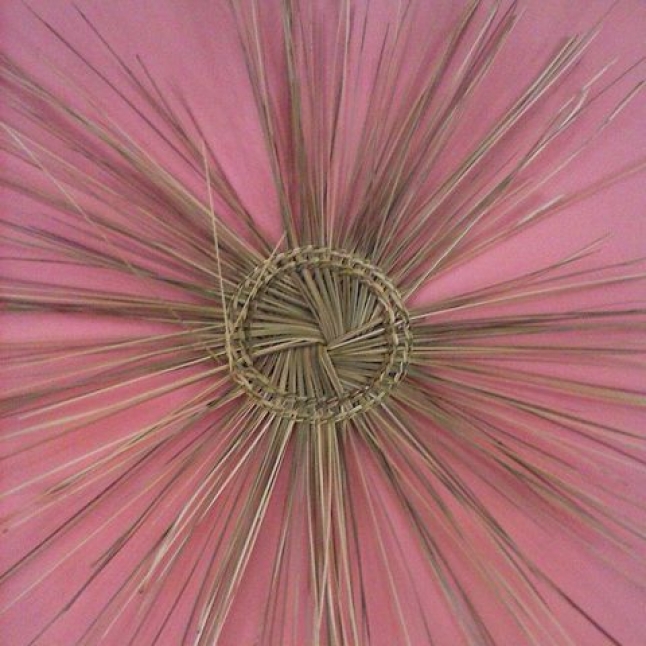
01 September 2015 The laboratory of the plot: at Bonarcado the tradition is alive
All over the Sardinian territory there is no shortage of that raw materials necessary for the work of basket weaving. From this point of view the area of Oristano is the most important and relevant area of the Island as about the processing and the creation of the traditional baskets.
Behind the ponds grow, in fact, marsh plants that provide the raw materials for the manufacture of wicker and splint baskets.
The poverty of the houses of the shepherds and the peasants of Sardinia, in the past centuries and in the recent decades, was dampened by a series of crafts, hung on the walls, that compensated, decorating the walls, the scarce presence of furnishings. From this point of view, the basket had a valence even more significant. Producing them was free. They were the result of the ability of the young women intertwining, skilly, reed, cane, willow and many other plants, to create a sublime sample of objects that were the basis of the ancient agro-pastoral kit.

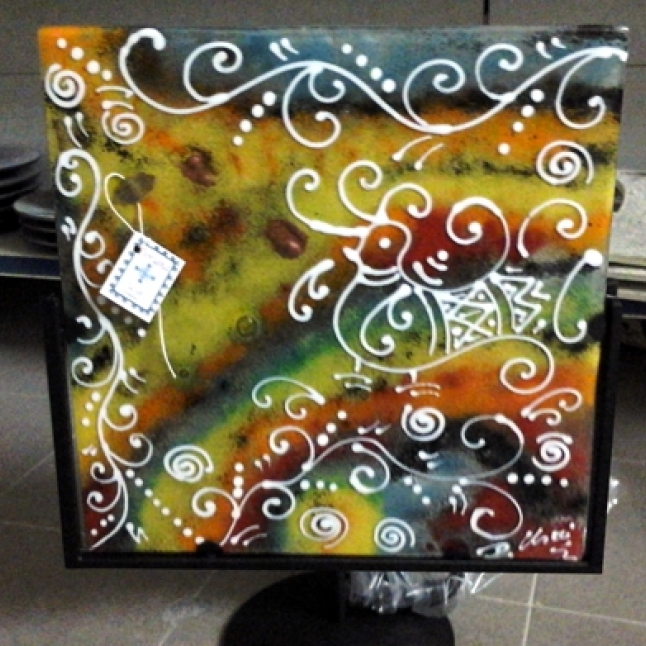
01 September 2015 Doriana Usai’s artistic magic
"Sleep on it" and the artists, before sleeping, reflect and daydream about their next creations. They spend the day realizing; but, they spend the night thinking and imagining what will be the next artistic work and what drawing will be represented. The art of pottery realized by Doriana Usai follows a particular daily path that makes each moment unique and magical.
As often it can happen, in a family core composed by artists, the children, too, begin having interest for that specific field and it becomes theirs, without no duties. The art is transmitted from a father to a child; but, if there is not passion, there is not the possibility of having excellent results.
There is a thin wire between passion and work. A job belonging to the artistic field cannot be considered a "parachute job". Although by now lots of individuals do specific jobs only for surviving, the art must be linked to love and an innate skill, not to a way for living, because if you cannot be able to realize a particular product, there is no sense for going on that road.
For Doriana Usai, a thirty five-year-old potter, the family and the framework where she grew up were two pillars of her life. Growing up and staying in contact with this world, you can make aware in various ways. Nobody obligated the young girl to carry on a specific professional path. Doriana felt herself free to choose to attend the school that she mainly likes.

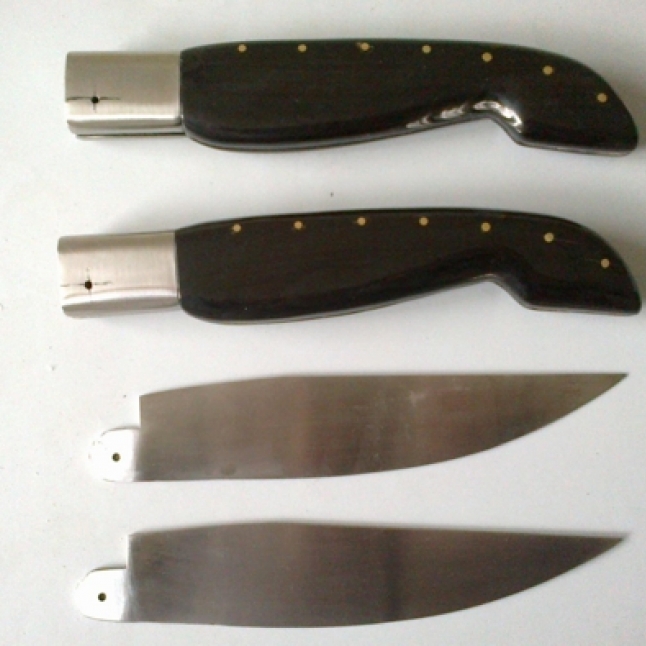
01 August 2015 Assemini Creates: Efisio Casula, a creator of knives
Sometimes, traditions of a nation are linked to the most incredible artistic peculiarities, those that we would not think that can represent a part of a "mental" heritage of a community. Indeed, knowing that a knife, usually belonging to the masculine field, can become a thing very appreciated by the feminine people, could cause wonder. But, actually, a situation as such can happen in different Countries, as France, where women are the most evaluator of knives and they spread the culture to their daughters, too. Travelling all over the world and spreading his art, Efisio Casula, a creator of knives, had the opportunity of knowing social realities to which he was not used to.
Born with a personal skill and grown up with an extraordinary passion for the art of knives, when he was thirteen years old, Efisio Casula could buy his first knife. It was a thing made by hand, long eight centimeters and built with a horn of an ox. The cost of the knife, 35000 Lires, was an index of total saving and sacrifice by a child who wanted that thing such that he had conserved day by day a quantity of money for buying a product that, in the future, would have represented the core of his work. During the time, he began building some daggers for simulating the fights done in a gym for the drills of martial arts.
Progressively, years spent and he became a teenager and an adult boy. The final decision about a transformation of his hobby in a true job, encouraged him towards the curiosity for other arts and towards the awareness according to which it was important to learn every artistic activities for increasing his cultural and professional baggage. Meanwhile, his life spent between satisfactions and achievements of goals. His customers increased much more and lots of people began appreciating his works, spreading the voice and making many buyers come. Mistakes, too, represented a lesson of life and the comparison with other artisans was useful for him for updating and improving.
